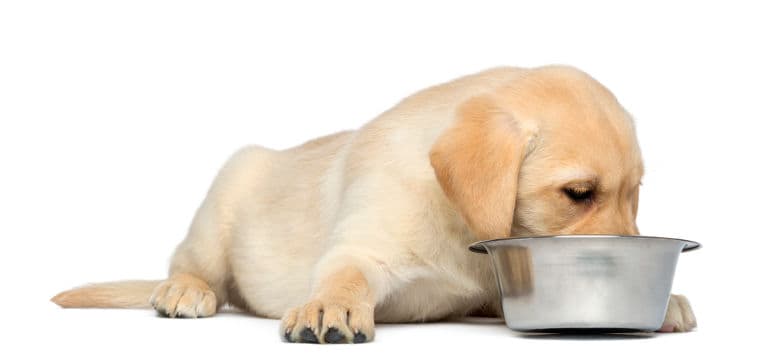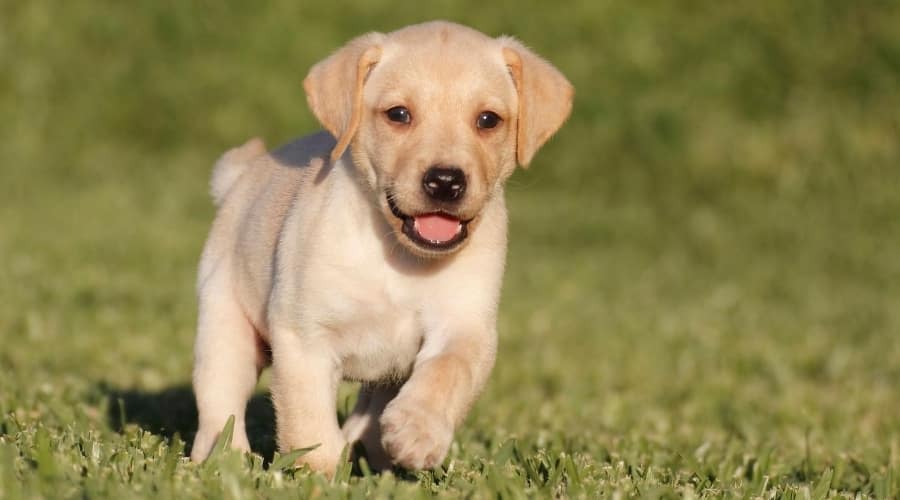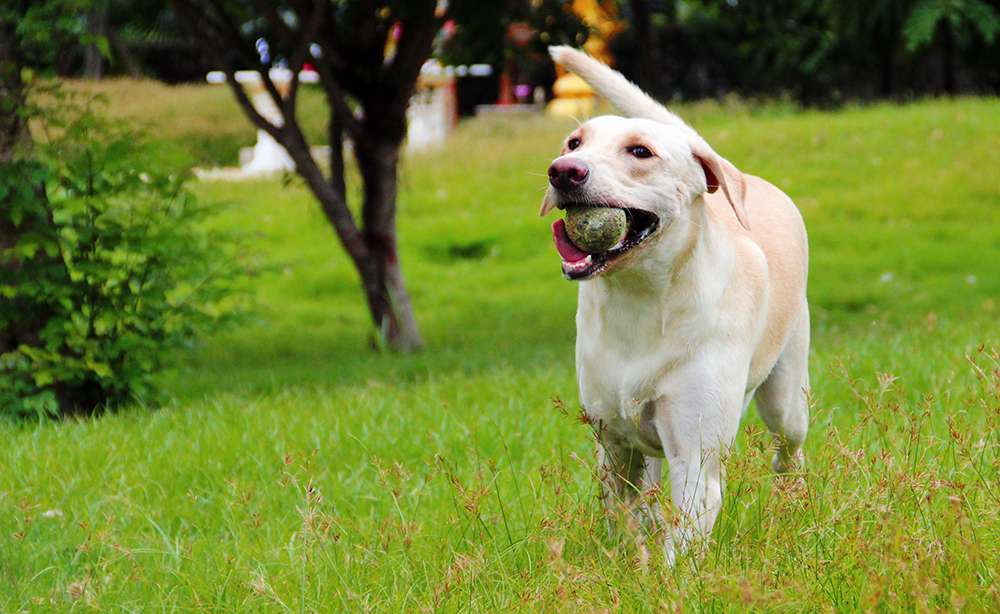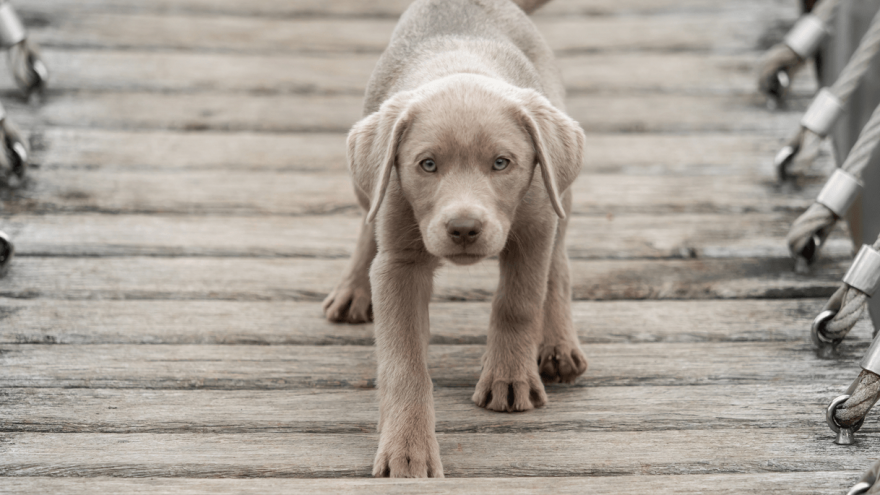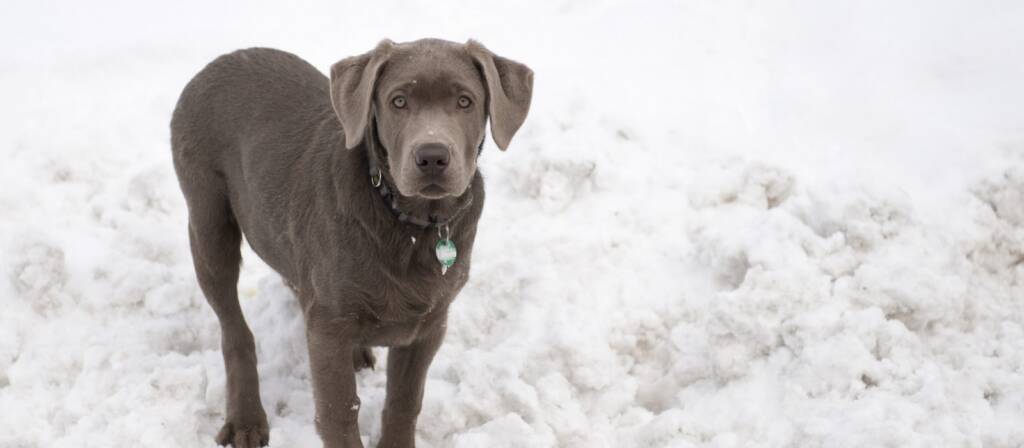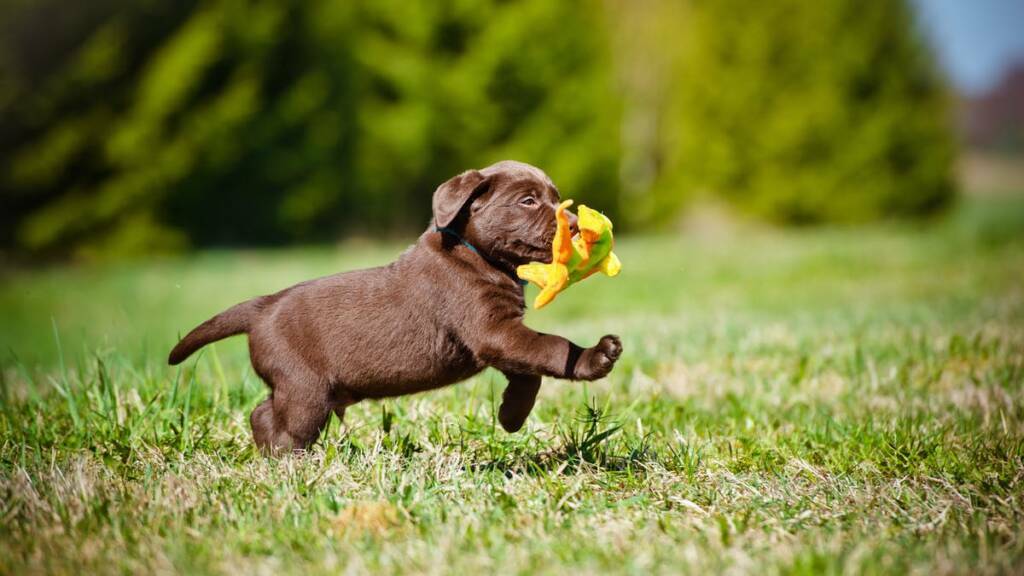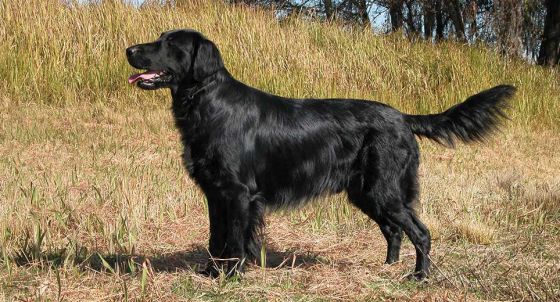There are different ways to feed your puppy. There are four ways of feeding your pup. We will help you figure out how much food to give them when to feed them, and what type of food they should have.
I will help you find the best puppy food. There are dry and wet and raw diets. I will also show you how to feed a puppy and when they should stop eating these kinds of food. Finally, we can look at reviews of different brands that produce dog food so that you can find the best one for your pet.
Is It Safe for My Puppy to Eat This?
We get a lot of questions about feeding Labrador Retriever puppies. People are often asking if it is all right to feed them eggs, rice, or milk.
When I was a kid, puppies were fed many types of food. They ate leftovers and raw meat. But they also ate canned puppy food and meals for grown-ups.
Today, you can buy food for your Labrador puppy. It is called kibble. Kibble has everything that the puppy needs in it, so you do not need to worry about what to feed them.
Which puppy food is best for Labs?
Naturally, we all want the best for our puppies, and we want to give them a nutritious, healthy, and tasty diet. So, what is the greatest puppy food for labs? Puppies are typically fed with commercially produced dry dog food known as kibble. That’s nice and can provide a well-balanced diet. Later on, we’ll look at some of the different types of dry puppy food available.
In many cases, dogs will eat a variety of foods. Canned dog food is another excellent option, as is commercial tinned dog meat mixed in. Commercial tinned dog meat can be added to increase the protein and vitamin content in a diet.
Labrador puppies can eat homemade food or a raw diet. You might have heard of BARF, which is a term for feeding dogs this way. There are benefits and drawbacks to raw feeding puppies, and we will talk about those later on.
How to Feed Your Labrador Puppy in Various Situations
Let’s take a look at each one in detail. The following are the most popular alternatives:
- Kibble (dry food)
- Barf (raw food)
- Wet food (cans and pouches)
- Home-cooked puppy food
All of these are beneficial and harmful in their way.
Some Experts Take Different Tack on Puppy Feeding
There are many different opinions about the best food for puppies. Experts say that people have different opinions, but there is no definitive answer about what is the best food. You can find evidence to back up any opinion that you want.
Some veterinarians you might see on YouTube say that a type of food called BARF is the way to keep your dog healthy. Other veterinarians and nutritionists say that kibble is a better choice because it can have problems if you try to go ‘natural’.
Even more so, dog breeders can be divided into those that feed a natural raw diet and those that feed kibble. Log on to the internet to find out what you find out. You will see plenty of claims for the benefits of one technique vs. another.
When you feed a dog, there is no compelling evidence that kibble is better for the long-term health of your dog. There are risks and benefits to both approaches, and the most important thing is to make sure your dog has high-quality food to eat. So let’s take a look at some of the advantages and disadvantages of various puppy foods now.
Choosing The Best Puppy Feeding Method
Different methods of puppy feeding suit different families. Some dogs and some families are better suited to raw feeding, and many dogs and their families are probably better suited to feeding kibble.
If like most people, you’ll be feeding your Labrador puppy on commercial dry puppy food, you should not feel that you are letting him down in any way. Let’s look now at feeding your Labrador puppy kibble. This dried food is how most modern puppies are fed in the USA and the UK
Feeding your Labrador Puppy on Kibble
In most parts of the world, you can buy ready-made puppy food made into pellets. Kibble stores well provided that you don’t get the food to become damp. An airtight plastic container or tin will do the job, although you should make sure it is food-grade quality.
Most vets and breeders believe that kibble is the best way of feeding your Labrador puppy. As a result, you are likely to get plenty of support from your vet if you decide to feed your puppy on dry food.
A good puppy kibble will contain every nutrient your Labrador puppy needs to grow and remain healthy. It will be tasty, good for keeping teeth healthy, and free from additives that can provoke allergies or stomach problems.
What happens if you choose to feed your Labrador puppy dry food? Can you give it other types as well?
What Other Food Should You Feed With Puppy Kibble?
If you are feeding your Labrador puppy kibble, there is no need to provide anything else apart from water. Puppy kibble from a reputable manufacturer is intended to be a complete and balanced food. Some owners like to mix in canned dog food or even scraps of raw food with kibble.
There’s probably no harm in doing this occasionally with an older dog, but with puppies, you may find it causes upset tummies and there’s a risk that you won’t be feeding a balanced diet unless you include considerable variety in your ‘extras’.
Speak to your Vet
As always, check with your vet if you want to try it, especially if your puppy needs a special diet.
Whether you decide to feed only with kibble or you want to mix it up, pick a good dried food manufacturer and stick with them. Another type of food, which has grown in popularity in recent years, is the raw food diet.
What About Feeding Puppies On Raw Food?
Some people are worried about the long-term effects of feeding your Labrador puppy kibble and believe there are advantages to feeding a more natural raw diet. I have fed many of my dogs this way. There are pros and cons to raw feeding which you need to consider carefully before plunging in.
Do Plenty of Research
You’ll need to do some research on the nutritional needs of puppies to maintain a balanced diet during this period of rapid growth.
Although I like the raw diet for my dogs, most puppies fed kibble go on to have long and healthy lives. Whatever food you choose, the most important thing is portion control. Too much food and they will become fat: too little and they might not grow and develop properly.
How Much to Feed a Labrador Puppy?
People often tell me how much their puppy weighs, and ask how much food they should give him. One of the most common questions we hear is “how much should I feed my Labrador puppy?”
I have put up a puppy diet guide, below, to give you an idea of what quantities you should be feeding. Most food brands give you a Lab puppy feeding chart.
However, knowing how much to feed a Labrador puppy is sometimes a matter of keeping an eye on her. If she looks too fat, you might be overfeeding her.
Risks Of Overfeeding Your Puppy
Rapid growth doesn’t just put weight on a puppy but leads to larger but less dense bones and associated skeletal abnormalities. Labradors and other larger breed dogs are particularly at risk if they grow too quickly. Try to follow the charts and feeding guides, and don’t forget to book a check-up at the vet to make sure your Lab’s growth is normal.
The following diet chart is for kibble-fed puppies and does not apply to raw-fed pups. It gives you an idea of how much should I feed my Labrador puppy
Lab Puppy Feeding Chart
The Lab puppy feeding chart below is only a very rough guide. The quantity of food you need for your puppy will vary depending on your puppy and on the brand of food you are feeding him.
Many food manufacturers provide similar dietary charts on the bag of food or their website. You can also check with a vet or dog nutrition specialist to make sure that your puppy grows to be strong and healthy with just the right amount of food.
The diet charts are always useful when selecting the best dog food brand for your puppy.
Choosing Best Brand of Puppy Food
A good brand of dog food will provide all your puppy’s nutrients and keep him healthy without costing you a small mortgage each week.
It’s important to give your little one food specifically designed for puppies because they have different nutritional needs and their small teeth cannot handle large, hard dog biscuits. Don’t feed puppies the kibble is sold for adult dogs.
When feeding your Labrador puppy, the right product will be for medium/large breed puppies. Check the pack carefully and look at the dietary charts. Ideally, you want the optimal protein content and the lowest amount of additives.
Part of this always comes down to the cost, because the healthiest foods are usually the most expensive and may not be affordable for some families.
The Cost Of Puppy Food
Some brands of food are more concentrated and contain a higher proportion of proteins, essential oils, and other nutrients. The cheaper brands may contain more ‘fillers’ in the form of extra carbohydrates, usually made from grain. The absence of these fillers means that you can often feed lower quantities of more costly food, making them less expensive than they first seem.
You might also find that cheaper brands make your puppy poop more due to those extra fillers going straight through him. While some brands are beyond the budget of many families, it is usually good to buy a premium brand.
High-Quality Brands of Puppy Food
Some brands of puppy food have developed a reputation for producing a high-quality product and have many devoted supporters, including breeders that have fed them to generations of puppies.
We’ve selected some good quality brands in our Amazon puppy picks:
One of our favorites is Orijen Large Breed Puppy Formula.*
Orijen and Nature’s Variety (and some of the other more expensive brands) rely on legumes like lentils and chickpeas as a source of carbs.
These are much gentler on a dog’s stomach than grain, which can cause bowel irritation.
Both of these brands receive good ratings on Dog Food Advisor, an independent dog food review site where you can find lots more information on the ingredients of different brands of dog food.
Availability of Puppy Food
The big brands are widely available in many parts of the world, and they have a valuable reputation to maintain. So, the chances are, your puppy will be eating a good quality product if you choose one of these.
On the packet, your puppy food should give you the manufacturer’s quantity guidelines for that brand.
Again, this is a rough guide only, and you should not follow the advice slavishly. Overfed puppies are prone to diarrhea, obesity, and too-rapid growth.
Now, we’ll explain how to figure out if your puppy is getting too fat or too thin.
Following Puppy Feeding Quantity Guidelines
Just to complicate things, not every puppy in each age group will fall within the weights displayed on the chart above. Some owners may worry that there is something wrong with their puppy. However, don’t worry, because our cuddly Labrador pups vary so much.
Quite simply, puppies of the same age vary in weight and size, so that means the amount of food you need to feed them will be different. Use the guidelines on the packet as a guide, then observe and feel your puppy to check how he is doing. You can always chat with your vet if you have any concerns.
We looked at the type of food and the amount, so we can now look at the feeding time routine. Let’s start with where to feed your puppy.
Where To Feed Your Puppy
If you’re feeding your labrador puppy in a family room when she is small, she will soon become used to eating with people milling around her. This should prevent behavior we call ‘Food Guarding.’
Food Guarding
At some point, puppies may attempt to guard their food by growling. This is more likely if he is used to eating in isolation, but you suddenly expect him to eat in front of people. Don’t panic if your tiny friend starts food guarding because it is an easy thing to sort out if you are willing to learn a few tips and techniques.
Don’t be tempted to punish your puppy, because that will make things worse. You will need to follow the instructions in this link to stop your puppy from growling over food.
Crate Feeding
Feeding your Labrador puppy some meals in his crate can be helpful, especially if he is a bit unsure whether the crate is a good thing or not.
Choosing The Right Food (And Water) Bowls
There is plenty of choices when it comes to choosing a food bowl for your puppy. You can if you wish, simply feed your puppy from one of your plates or bowls.
My preference is for a simple stainless steel bowl*
. They are dishwasher safe, don’t break, and last a lifetime. Because they don’t scratch easily, food can’t gather in difficult-to-clean cracks and scratches, making it easy to keep the bowl clean and sterile.
The only disadvantage is that they can be a bit noisy when the puppy chases the empty bowl around the kitchen!
If you are worried about esthetics, there are plenty of much prettier bowls on the market if that’s what appeals to you.
I recommend a really heavy ceramic bowl for water, simply because they are so difficult for your puppy to tip up – and he will try!
Size can be important, too. If you buy a bowl that is too big, then it is easy to give your puppy too much food accidentally. Too small a bowl, and you might give her too little. A right size bowl is a useful tool for keeping your puppy at the right weight.
Keeping Your Puppy At The Right Weight
Your dog mustn’t get too fat or too thin. However, you have some leeway, and you should increase or decrease his rations accordingly as he grows.
The most common problem is puppies that get too fat. Although we all love cuddly Labrador puppies, they should not be rotund!
Get Pippa’s Training Tips!
delivered to your inbox each week
SEND TRAINING TIPS
By three months or so, they should have definite waist just like older dogs. Check out this page for more information. Don’t forget, if you are unsure about your puppy, your vet is the best person to give you some great guidance.
Of course, the other side of the weight issue is puppies that look too thin. That can be another important issue.
What If Your Puppy Is Too Thin?
If you are worried about your puppy’s growth rate it is a good idea to take him along to your vet for a check-up. Sometimes, it is just a matter of increasing the amount of food or changing the brand to a more nutritious option with fewer fillers.
Importantly, don’t just double her food overnight, because a sudden increase in quantity can upset her tummy and make matters worse.
If you can see your puppy’s ribs, or she weighs a lot less than the weights on the chart above for her age, get your vet to have a look at her.
How Often Should you Feed Your Labrador Puppy?
Like most baby animals, puppies need feeding more often than adult dogs. Right now, your puppy’s growth is the fastest it will ever be in his life. He needs plenty of calories to fuel that growth, as well as the right nutrients.
If you feed his entire day’s ration in one go, his digestive system will be overwhelmed and he’ll end up with diarrhea. So, you need to make sure that your puppy’s daily ration of food is broken up into several small meals, fed three to four hours apart.
Feeding your Labrador puppy little and often is a great way of preventing tummy upsets. If your puppy has rather loose stools on three meals a day, try breaking his ration up into four meals a day for a while.
General Guidelines
As a rule of thumb puppies fed on kibble require
- Four meals a day from eight weeks to three months
- Three meals a day from three months to six months
- Two meals a day thereafter
This is all part of getting your puppy used to the feeding routine. Puppies tend to like predictability and feeding at set times.
Mealtimes and Schedules: Or When to Feed Your Puppy
Your puppy’s feeding schedule can fit in with your personal preferences up to a point. But don’t try and cram all his meals into the evening. If you have to work during the day, you’ll need to make sure someone comes in to feed him.
You can’t just leave a puppy’s food ration for the day down, because he’ll eat it all at once and this may upset his tummy.
Ad Libitum Puppy Feeding
You may have heard of the ad-lib feeding system, where puppies can help themselves to food at any time from a hopper.
The idea is that the puppy will regulate his food intake if food is never restricted.
However, studies have shown that puppies fed this way have a higher incidence of bone and joint problems. As a result, it is not a good idea.
Choosing the right time of day to give your puppy his meals is important because it determines whether you can keep your puppy clean and dry at night. Feeding schedules can also influence how long your puppy sleeps at night.
First Meal of the Day
Puppies love food and crave the attention that comes with feeding time. If you’re feeding your Labrador puppy at 6 am, because he has woken you and was hungry, the chances are he’ll wake you at 5:45 the following day!
Remember, feeding is a powerful reinforcer of behavior. If you don’t want to encourage your puppy to wake you up earlier each morning, don’t feed him as soon as you get up. Have a coffee and wake up before filling the bowl.
Have a set time for breakfast and don’t feed her before then, even if she has been awake for two hours. She won’t starve in that short period, although she might make you feel like she is! Be firm and resist the temptation.
Last Meal Before Bed
Try to space your puppy’s meals out fairly evenly throughout the day. Most importantly, don’t feed your puppy just before you put her to bed for the night.
I like to leave at least a four-hour gap between the puppy’s last meal and her bedtime. This helps to reduce the risk that she will want to use the bathroom at 2 am.
Example Puppy Feeding Schedule
Just to help you on the way, here is an example puppy feeding schedule. Of course, you can adapt this to suit your routine as long as you pay attention to the above advice.
Feeding schedule for an 8 week old Labrador puppy
My puppy feeding times for 8-week-old puppies tend to be something like this:
- 7 am
- 11 am
- 3 pm
- 7 pm
You don’t need to be a slave to the clock, but this is just to give you an idea. A few minutes or even half an hour earlier or later won’t cause problems.
12 Weeks Old
Feeding schedule for a 12 week old Labrador puppy:
- 8 am
- 1 pm
- 6 pm
If you want to make an early start with training your puppy, you can use all or part of his daily rations during training sessions. Again, spread these out throughout the day, and don’t feed too close to bedtime
What If My Puppy Is Still Hungry?
One of the things people most often ask is, “what if my puppy is still hungry?” They have followed the guidelines on the packet, but the food doesn’t seem to be enough to satisfy the puppy.
If your puppy clears up his food in a few seconds and begs for more, don’t panic. This is perfectly common and perfectly normal.
Your puppy doesn’t know for sure when his next meal will be along, so it makes sense to him to eat as much as he possibly can right now!
And, puppies are very good at using every trick in the book to win you round.
Stand firm!
Slow Feed Dog Bowls
You can try giving your puppy her meal on a slow feed bowl or plate. These work very well for some puppies and can help to prevent a puppy from eating its food so quickly that it makes her sick.
The large one will hold a full meal of Labrador kibble, enough for an adult.
In addition, as a bonus, your puppy will have a lot of tail-wagging fun getting the pieces of kibble out from in between the ‘blades of grass. Problem-solving can be very enriching for your puppy.
What about the opposite problem, that your puppy is refusing to eat?
What if My Puppy Won’t Eat?
As most experienced Labrador owners know, not all puppies are greedy. And studies have shown that puppies, in general, eat more when they are fed in a group with other puppies
Many puppies go off their food for the first few days that they spend in their new home. They eat a few bits of kibble then refuse any more. The puppy may eat from your hand but not their bowl. If your puppy won’t eat at all for more than four hours, then call your vet for advice. Call sooner if the pup is listless or showing any signs of being unwell.
Otherwise, a somewhat reduced appetite, to begin with, is probably nothing to worry about. Just mention it to your vet when you take the pup for his first check-up, or in the next day or two.
Should Your Puppy Have Milk?
A few older breeders still give puppies milk and cereal for two of their four meals. This is a throwback to the days before we invented kibble. It is also very natural to want to give milk to a baby animal, and it sometimes feels like the right thing to do. However, don’t forget that dogs are weaned at a younger age than many other mammals.
At eight weeks old, when you bring your puppy home, he is fully weaned. He does not need the milk of any description. Many older puppies are highly intolerant of milk and will simply get diarrhea if you feed it to them.
If you are feeding your Labrador puppy on complete kibble, your puppy does not need milk to drink, and freshwater is all they require.
Now, you have followed puppy feeding advice and your dog is almost an adult. How can you change the feeding routine to help your puppy transition to the next stage of its life?
Changing From Puppy To Adult Food
Kibble manufacturers often recommend feeding your Labrador puppy kibble for puppies up to 12 months of age, before changing to adult kibble.
Some breeders and experienced dog owners do switch their lab puppies on to adult food before this, but not usually before they reach six months of age.
Switching Between Dog Food Brands
If you haven’t brought your puppy home yet, make sure you get a diet sheet from the breeder and feed her with the same brand for at least a week or two.
There will be quite enough for her little tummy to cope with when she leaves home without learning to digest a different food.
Adding Variety To Your Puppy’s Diet
It’s very easy to give human attributes to puppies and assume that, because we would be bored eating the same thing, your small one will too. This encourages people to try to add scraps to the puppy diet or change their brand.
Remember, adding your extras, like cereals or milk, to kibble might make you feel caring, but it will only unbalance the whole diet. Changing brands can upset puppies’ tummies and make them sick.
In other words, don’t be tempted to fix what isn’t broken. If your pup has a balanced and tasty diet, why change it? Puppies probably don’t get bored from lack of variety, although there is rarely any harm in changing the flavor of food, as long as it is the same brand.
Hand feeding, training, and treats
With modern training methods, you’ll find that much of your puppy’s food allowance will be used up in training. You don’t need training treats for this. Simply use your puppy’s normal food.
If you want to, all the rest of the puppy’s food can also be hand-fed. Nowadays I do this with my puppies and if you are at home throughout the day you can do this too. It’s a great way to form a deep and lasting bond with your puppy.
It works like this: I measure out the puppy’s daily food allowance and divide it into portions, but instead of putting those portions into a bowl, I put them in small airtight food containers labeled with a ‘mealtime’.
As soon as one mealtime has passed I open the pot for the next mealtime, and over the next few hours, I hand-feed pieces of the kibble in the pot to the puppy whenever the puppy does something that I like and want to encourage. I also get visitors to the house to hand-feed the puppy from the pot too. Here are some examples of when we feed the puppy
- When the puppy is looking up into your eyes
- When the puppy is keeping all four paws on the floor while you pet them
- When the puppy is resting quietly on a blanket or cushion
- When something new happens that might be scary (eg someone knocking at the door)
- When something new happens that is super exciting (eg children visiting)
I also use much of the kibble-playing puppy games – these are games designed to build the puppy’s confidence and lay the foundations for future obedience training. I keep some of the kibbles in a pocket and give some to the puppy each time I leave the room so that they associate me with leaving with a happy experience.
If there is any food left in the pot by the time written on the lid, I tip it into my hand and let the puppy eat it in one go. But usually, the pot is empty. And all you need to do is open the next pot!
Good luck with feeding your Labrador puppy! And don’t forget to contact your vet if you are worried about him in any way.
If you want to find out more, we have plenty of new resources for you to look at.
More Puppy Feeding And Growth Resources
If you have recently brought home a new puppy then don’t forget to check out First Days at Home with Your New Puppy and our Labrador Puppy Growth FAQ, for lots more tips and information!
One of the best places to get help and support in feeding your puppy is, of course, our wonderful forum. It is packed full of puppy advice and information, and lots of other new puppy owners and experienced Labrador owners are only too happy to advise and support you.
If this is your first puppy, don’t waste any more time – get yourself over to the forum now – we’d love to meet you. And don’t forget to bring some photos with you, because we simply love puppy pictures too.
Summary
Dry diets, wet diets, and raw diets can all work for your Lab, but you should not feel that you have to prepare home-cooked food for your puppy if you don’t want to. Most puppy parents feed commercially prepared complete foods, and puppies thrive on good quality kibble.
As always, if you have any questions, feel free to leave us a comment and, as always, we regularly update articles with new information from our readers.
